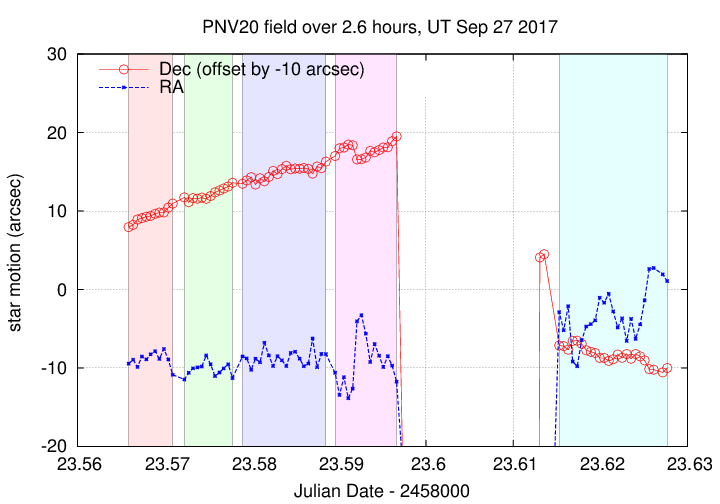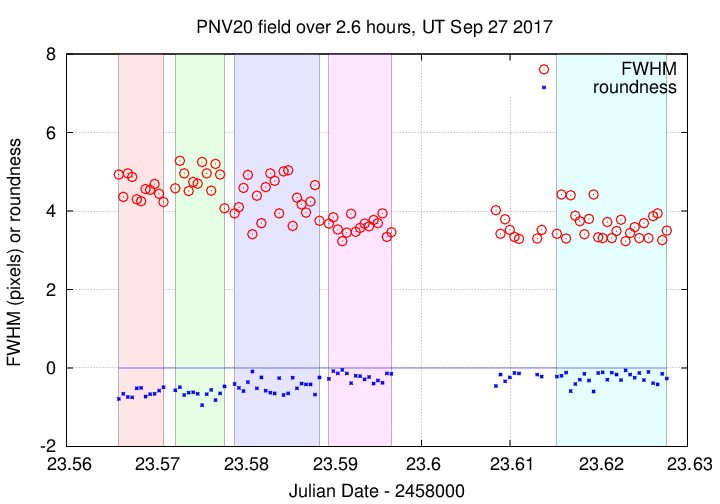
The main setup was:
Conditions were good:
My main goal this evening was to continue to test the autoguiding, using our new camera. Earlier tests showed that the software was over-correcting for small shifts in RA, leading to elongated images.
This time, I discovered an option in MaximDL called "Fine Aggressiveness", which allowed me to request smaller corrections (I think). I set the telescope to the field of the cataclysmic variable star known as PNV J202053.97+2508145, which was close to the meridian and reasonably high in the sky. I used no filter ("empty" in the MaximDL list of filter positions) and 30-second exposures in this rich field. The guider was set to 5 seconds, and it was easy to find guide stars with good signal. The appearance of stars in the guide camera was really fan-shaped, but I think I can't avoid that with the off-axis system.
The graph below shows the amount of drift over the course of about 2.6 hours. The large gap is due to a period when I tried using the PHD Guiding program (not successfully).

The segments (indicated by colored backgrounds) are from left to right:
guide camera rotated so (row,col) roughly aligned with (North, East). Also, telescope nudged in Dec slightly North, to try to remove backlash
Once again, the telescope drifted in Declination for much of the run. It does seem to have improved after the break, which might be due to some large (0.2-degree-ish) motions North and South during the break. I think that motions to North just before starting the guider help to remove backlash.
My occasional check of image quality during the night suggested that the quality of guiding improved during the later period: the CCD images looked nicer, with smaller stars. To check this impression, I computed the median FWHM and "roundness" of stars in each image.

As you can see, the FWHM decreased significantly during the run, and the roundness came closer to its ideal value of zero (shown by the blue horizontal line). I conclude that small values of aggressiveness do improve the guiding, but I think it could still be better.
Also, a note on adjusting the mount to reduce drift. If one is looking at a star near the meridian, on the celestial equator, and one sees it drift in Declination with time:
Last modified 9/23/2017 by MWR.